By Marc G. De Santis
The Battle of Gaugamela began on the morning of October 1, 331 bc, when two great armies drew up for battle to determine the destiny of empires. Three years before, an army of Macedonians and Greeks had crossed to Asia behind the young king of Macedonia, Alexander III, known better to history as Alexander the Great.
The brilliant youth had led his army across Asia Minor and the Levant into Egypt, defeating two Persian armies in two great battles, at the Granicus River in 334 bc in what is now Turkey, and a year later at the Issus River near where Turkey, Syria, and the Mediterranean come together.
Alexander had been incredibly successful so far. He had seized every opportunity that had presented itself and in two years had secured control of the western provinces of the Persian Empire. In Egypt he was hailed as a god by a priesthood and populace weary of centuries of disrespectful Achaemenid Persian rule. Alexander had gained a territory of his own far larger than any Greek had ever ruled, but his mission remained incomplete. He had not come to Asia merely to win an empire, but to deal a deathblow to the Persians who had menaced Greek freedom and culture since the days of Darius and Xerxes over a century and a half before. Alexander had arrived at the head of what he considered a Pan-Hellenic crusade to punish the Persians for the harm they had done to Greece in the invasions of 490 and 480 bc. Asia was to be won rightfully by the spear, and the issue would never be fully decided until Alexander triumphed completely over the Persian foe.
The Roman historians Arrian and Quintus Curtius Rufus give us a picture of a young and chivalrous Alexander marching forth to do battle with the Persians. Although they wrote their histories long after Alexander was dead, they used eyewitness sources now lost to us, such as the memoir of Alexander’s general Ptolemy, who would later go on to found a successor dynasty in Egypt. What they made of Alexander is crucial to our own understanding of the man, because theirs are among the most important ancient sources that we have for Alexander’s career. From their pages emerges a contradictory figure. In the early years, Alexander displayed great bravado and was almost knightly in his conduct. But later, after he became intoxicated with power and success, he grew harsh and cruel.
Persia’s King of Kings: Darius III
Gaugamela was to be the watershed event in his life. Had he lost, he likely would have gone down in history as a bright and gifted youth, who generated sound and fury but accomplished little. His victory opened to him not only the mastery of Asia but also the lure of such immense power that it would in time degrade his spirit.
Opposite Alexander stood the army of the Persian King of Kings, Darius III. He was a decent man and a concerned ruler, but his military ability was no match for that of the 25-year-old Macedonian genius. Darius had done his best to thwart Alexander’s progress through his empire. His western governors, or satraps, had been defeated at the Granicus three years before, and he himself had fled the field of Issus ignominiously when Alexander and his elite Companion cavalry managed to hew their way through his Royal Guard. So quickly had Darius taken flight that the Persian royal family—his mother, wife, and daughters—had fallen into Alexander’s hands. Although Alexander by all accounts behaved chivalrously toward the Persian ladies and allowed them to retain their titles and privileges, their loss must have been a crushing blow to Darius’s spirit.
Even with his pell-mell flight from Issus, Darius might still have been caught and slain by Alexander had not pressing problems on the Macedonian left wing compelled the young king to turn away from the pursuit and rush to the aid of his troops under the command of Parmenio, an elderly but highly capable officer who had served under Alexander’s father, Philip II. Reluctantly, Alexander let Darius make good his escape and attacked the Persian right wing in the flank. After some hard fighting the battle was won, and the Macedonians helped themselves to the rich spoils of the Persian camp.
But the Issus was not a decisive battle. Darius was still at large and commanded the loyalty of his troops and peoples in the eastern satrapies of his empire. Alexander had to deal with the threat that the Persian navy posed to Greece, and set about reducing its bases on the eastern Mediterranean coastline, attempting to defeat the enemy fleet by depriving it of places to put in and repair. In several tough and bitter sieges, notably at Tyre and Gaza in 332 bc, Alexander overcame determined and ingenious defenders with even greater determination and ingenuity. With the loss of their homes, the Persian fleet, mostly of Phoenician origin, made their peace with the Macedonian invader.
The Dangers of Defying Alexander
Alexander showed clemency and even generosity to those who submitted promptly to him and no mercy to those who defied him for too long. The stubborn people of Tyre, who had resisted him for months, were slaughtered by Alexander’s vengeful troops, and some 30,000 survivors were sold into slavery. The commander of the garrison at Gaza, the eunuch Batis, who had resisted Macedonian arms in a nasty siege in which Alexander himself was seriously wounded, was, according to the historian Curtius, pierced through the ankles with thongs and dragged around the walls of Gaza in emulation of Achilles dragging the corpse of Hector around the walls of Troy. To defy Alexander was to court total destruction.
While in Egypt Alexander sought out the priests in the shrine of Ammon at the oasis of Siwa, where, according to Curtius and Plutarch, he was greeted as a son of Ammon, identified by the Greeks as Zeus, although Alexander himself never told anyone what the oracles had actually said to him. All that he would reveal was that he had received the answer that his heart desired. Whether the story has any merit is now difficult to say. But from this point onward the notion of Alexander’s divine parentage began to grow, and his personality began its long but unmistakable transformation from Macedonian youth-king to oriental god-king.
The full ramifications of this change were many years distant, however, and Alexander still had to deal with Darius. The Persian king had busied himself over the winter and spring that Alexander spent in Egypt with raising a new imperial army from the unconquered and untouched eastern satrapies. Despite great losses, the Persian state was massive, and the resources of just the eastern provinces in men and materiel were enormous. In fact, the east provided the King of Kings with some of his finest troops, including the excellent cavalry of Bactria, Sogdia, and Hyrcania.
How to Buy an Army
Moreover, the wealth of Darius enabled him to buy the services of the finest heavy infantry in the world—Greeks. In spite of Alexander’s pretensions of leading an all-Greek crusade to smite the Persians, many Greeks feared and hated Alexander more than they did any Persian sovereign. They remembered his brutal and merciless destruction of Thebes, and the restive Greek city-states had caused Alexander to leave behind an army under General Antipater almost as large as the one he took to invade Persia. Indeed, later on, the Spartans would revolt against Macedonian overlordship and be defeated by Antipater in battle. One of Alexander’s most capable foes was the Greek mercenary general Memnon, who led the defense of Halicarnassus (in present-day Turkey) and proved to be one of Persia’s best commanders.
Other Greeks had a more prosaic reason for serving with Darius: money. By the later third century bc Greece was awash in rootless men seeking employment. A traditional means was to serve the Persian King of Kings as mercenary infantrymen. The Persians were rich in cavalry but poor in high-quality heavy infantryman, or hoplite, that every city-state in Greece produced. Thousands were in the service of Darius at Granicus and Issus. Thousands more flocked to his banner for pay even while Alexander rested in Egypt.
After his sojourn along the Nile, Alexander departed for Tyre in late spring of 331 bc. There he met with delegations from Athens, Chios, and Rhodes. The Athenians were interested in securing the release of their countrymen taken captive at the Granicus, and the Chians and Rhodians complained of the actions of their Macedonian garrisons. Alexander was placatory in his treatment of the delegations, and his relations with the various Greek states under his control reflect the precarious nature of his hold on Greece. About this time the first signs of open rebellion appeared. Agis of Sparta was now in revolt, and Alexander reinforced Antipater with one hundred triremes from Phoenicia and Cyprus. But Alexander himself could not return to Greece to deal with the Spartans, and from Tyre he set out to find Darius and settle accounts.
The difficulties in Greece serve to highlight the danger that surrounded Alexander’s expedition to Asia. On the eve of his climactic confrontation with Darius, Alexander learned of the Greek menace to his rear. This makes his decision to strike out even deeper into Asia all the more dramatic, showing that Alexander, even after securing the entire eastern Mediterranean for himself, was willing to stake everything he had on a battle with Darius for the “lordship of Asia.” The fates of Alexander and the empire of the Persians would hang on the outcome of this campaign.
Macedonia’s Blistering Desert March
The Macedonians then marched from Tyre for Thapsacus on the Euphrates River in July, when temperatures there average about 120° F in the daytime. A Persian cavalry force 3,000 strong under the command of one of his officers, Mazaeus, shadowed the Macedonian army. Darius surmised that the rich city of Babylon was Alexander’s objective and, accordingly, he directed Mazaeus to pursue a scorched-earth policy in hopes of weakening the Macedonians before they came to grips with the main Persian army.
Darius obviously hoped to so debilitate the Macedonians that they would be simple prey for the well-supplied Persian army that he had recruited over the last year. Supply was of critical importance to the success or failure of Alexander’s campaign. By the time he reached the Euphrates River valley, most of the grain produced in the south and central regions would already have been harvested and stored in municipal and temple granaries of the large and well-fortified cities. To get at that grain Alexander would have had to besiege them—out of the question given that Darius was at large with an army. Moreover, uncultivated land in these areas would have remained desertified and would not even provide fodder for the horses.
But Alexander would not fall into Darius’s trap. Instead of pushing south toward Babylon, the Macedonians set off northeast across the Mesopotamian plain where he could more easily feed his army. Mazaeus rode to Babylon with the news of Alexander’s unexpected move. Darius then decided to keep Alexander west of the Tigris. To do this he would have to move his army all the way up to northern Mesopotamia before Alexander could reach the river and prevent his crossing. The Persians guessed that Alexander would attempt to cross at the ford of Mosul, not far from the ancient Assyrian capital of Nineveh. If Alexander attempted to cross elsewhere, Mazaeus’s cavalry force was to fight a delaying action until the main army arrived in support.
Alexander discovered this plan when several Persian scouts were captured. They revealed the Persian strategy and also the size and units in the Persian army. Alexander then headed instead for the ford at Abu Wajnam, farther north, and reached and crossed the Tigris River. The north of Mesopotamia offered more in the way of supplies to the Macedonians than the lower Euphrates River valley, and so Alexander’s troops could be kept well fed and healthy. The towns and villages of the northern river valley were unfortified and the grain stored in them would have been easy to obtain. Unfarmed areas would be grassy because of the wetter climate compared to the southern and central regions.
With the Macedonians now only 50 miles distant, Darius had to change his plan again. The best he seems to have hoped for was to confront the Macedonians on ground favorable to his own army. He sought out and found a piece of flat terrain near the village of Gaugamela in modern northern Iraq. He had his engineers clear the area of obstructions, and even had some parts of it flattened to provide easier movement for his scythed chariots.
Message From the Moon
Alexander’s troops meanwhile had skirmished with Mazaeus’s cavalry, and the Persians were driven off. The army rested for two days and then resumed its progress toward Darius. The previous evening there occurred a partial lunar eclipse, and the superstitious Macedonians sought a meaning of this portent. Aristander, the royal astrologer, interpreted it to mean that Alexander would triumph during this moon, or lunar month. Thus convinced, the Macedonians marched on and made contact again with Mazaeus’s cavalry. Prisoners were taken, and from them Alexander learned that Darius was a mere eight miles away. Knowing of Darius’s ground-smoothing activities, Alexander correctly deduced that Darius planned to stand and fight there, that there was no need to rush to catch him. So he gave his troops four more days of rest.
While Alexander was encamped not far away, Darius’s men attempted to smuggle into the Macedonian camp promises of rewards if anyone would kill or betray their king. These attempts were stopped and hushed up. Also at this time, Darius’s wife died of illness, and knowledge of her passing was brought to Darius by one of the queen’s eunuchs, Tyriotes. The man had stolen a horse and fled the Macedonian camp to reach the Persian army.
Curtius writes that Darius grieved loudly at the news of his wife’s death, and was certain, despite the assurances of Tyriotes, that his wife had been killed resisting the indecent advances of the Macedonian king. Darius in his sorrow and anger even threatened to torture the eunuch to see if he was truthful in his protestations that Alexander had never done any violence to the queen. Tyriotes declared that he would willingly undergo torture to prove the truth of his words. Seeing the eunuch’s sincerity, Darius looked up to the heavens, with tears on his face, and said “Gods of my country, before all else make firm my rule; but my next prayer, if my career is at an end, is that Asia find no other ruler than this just enemy, this merciful victor.”
Debating Darius
Did Darius really say such things? Arrian contains not a hint of this story, and it may be that Curtius merely repeats Macedonian propaganda intended to legitimize Alexander’s rule over the conquered Persians by giving him what amounted to the approval of his erstwhile enemy. Whatever the case, the story is evidence of the considerable efforts to which Alexander went to make himself palatable to the Persian nobility through which he would have to rule one day. His protection of the royal women since Issus was a piece of Alexander’s plan to retain the Persian monarchy and through it reign as the King of Kings himself.
Darius tried, not for the first time, to buy off Alexander. He offered him all of the lands west of the Euphrates, his daughter in marriage, his small son Ochus as a hostage, and 30,000 talents as ransom for the rest of his family. Alexander laid out these proposals to his senior officers. Parmenio offered the opinion that Alexander might as well ransom the women, because it was troublesome to carry them around with the army. Parmenio continued by pointing out to Alexander that no one had ever been master of territories from the Danube to the Euphrates, as Alexander was now. Darius was offering to recognize these conquests without a battle. Why not accept the offer? “If I were Alexander, I would accept this offer,” Parmenio said. “I would too, were I Parmenio,” replied Alexander. But he told the Persian envoys that Asia could not have two monarchs and that if Darius wished to remain king, then let him fight.
Thus the die was cast, and all would depend on the battle to be fought in the coming days. At the time, Alexander had a force of about 47,000 men. He rode out on the morning of September 30 to reconnoiter the Persian army. He was taken aback by what he saw. It was far larger than he had anticipated, and stronger too, especially in cavalry. There were large numbers of armored horsemen from Parthia, Bactria, and Scythia. What should he do? Some officers suggested an immediate attack but the cooler head of Parmenio prevailed. He suggested a reconnaissance of the terrain to look for impediments, and Alexander accepted this counsel and conducted it himself with some cavalry.
“I Will Not Demean Myself by Stealing Victory Like a Thief”
Later on, Parmenio went to Alexander’s tent and suggested a night attack against the greatly superior enemy. The Persians would not be expecting it, and the confusion would aid the Macedonians. Alexander answered, “I will not demean myself by stealing victory like a thief. Alexander must defeat his enemies openly and honestly.” Alexander had further reason to reject Parmenio’s advice. Night fighting was extremely risky, and even if successful might give Darius the excuse that he was not defeated fairly in the open, while if the Macedonians lost they would be surrounded by enemies deep in the heart of a hostile land.
The Persians remained under arms where they were, with the same dispositions as the previous day. Arrian relates that Aristobulus (a Greek court historian who accompanied Alexander’s expedition to Asia) wrote that Darius’s written orders for the disposition of his regiments came into Macedonian hands after the battle, and so the Persian order of battle is well known. Gaugamela is thus something of an oddity in the annals of ancient warfare. It is a battle in which the types and dispositions of troops on both sides are known with relative precision. On the right wing, in order from the far end inward, the Persians placed their cavalry from lowland Syria and Mesopotamia; then the Medes, the Parthians, and the Saka; then the Tapurians and Hyrcanians; and finally the Albanians and the Sacesinians.
200,000 Infantry, 45,000 Cavalry, and 200 Chariots
Next to these, in the center of the line, stood Darius himself with his kinsmen, along with the royal bodyguard, whose spears had golden apples on their spear butts, and two units of Greek mercenary infantry. Then, drawn up with them in depth came the Indians, Carians, Mardian archers, Uxians, Babylonians, Persian Gulf soldiery, and Sitacenians. Next to these in advance of the left wing were the Scythian horsemen, 1,000 Bactrians, and 100 scythed chariots. Behind, starting from the end of the left wing inward, was the Bactrian cavalry supported by Dahae and Arachosian cavalry. Next to these was a mixed force of Persian cavalry and infantry, followed by Susian, and then Cadusian cavalry regiments. Behind this formidable cavalry force stood a huge mass of Asiatic levy infantry. In all, Darius may have had as many as 200,000 foot soldiers, 45,000 cavalry, and 200 chariots, culled from no less than two dozen nationalities. This was the force with which Darius would face the greatest military mind the Western world had ever known.
That mind was still asleep on the morning of the fateful battle. So late did Alexander stay abed that his officers grew worried and ordered the men to take their breakfast. Parmenio at last shook Alexander awake and marveled that the king could sleep so soundly on this day. “It is not a bit surprising,” replied Alexander. “When Darius was burning the land, destroying villages and ruining our food supplies, I was beside myself with despair. But now that he is preparing to decide the issue in battle, what do I have to fear? Good heavens, he has answered my prayers!”
John Keegan has suggested that Alexander’s tardiness in waking was meant as a theatrical gesture, to convince his men that he was certain of victory and so could afford some more sleep. If so, it was yet another example of Alexander’s appreciation of the usefulness of the grand gesture, the great example. The need for the king to set an example for his officers and men was part of the social contract of the Macedonian kingdom. Alexander had to conduct himself as a heroic leader and had to fight in the forefront of his soldiers, whatever the dangers. Alexander’s presence in the front lines could not help but limit his ability to control the course of the battle, and so he had to rely upon an extraordinarily talented corps of subordinate officers. Parmenio was foremost among them, and on this morning he and the others were readying their soldiers for battle.
The Military Genius of Alexander vs. Superior Numbers
The size and disposition of the Persian army forced Alexander to rethink his tactical assumptions. Darius had more than 34,000 cavalry to Alexander’s 7,000. The Persian battle line may have stretched a mile longer than his own. No matter what he did, Alexander would be outflanked in the fight. Alexander thought hard upon this problem, and his solution was the stuff of genius from whence came his legend. Realizing that he must necessarily be surrounded by the far larger Persian force, he arrayed his regiments in a flat ring, with a refused left wing. Perhaps taking a page from the great Theban general Epaminondas, he intended to lead his advance with his right wing in oblique order. He hoped to draw away as many enemy cavalry as he could and then attack the hopefully weakened Persian center where Darius was positioned. Darius had to be made to attack first, which would leave him open to Alexander’s counterpunch.
Alexander had placed on his wings two detachments, each set at 45-degree angles to the main battle line. On the right was the Greek mercenary cavalry and behind them were the lancers under Aretes, the Paeonians under Ariston, half the Agrianian javelineers and archers, and finally the veteran mercenary horse under Cleander. The left wing flank guard comprised the light Thessalian horse under Sitalces, the allied Greek cavalry under Coeranus, the Odrysian cavalry, and the Greek mercenary cavalry under the command of Andromarchus. Alexander hoped to draw off as much of the Persian horse as he could by tempting them to move against his weak flanks. With this formation, and an oblique advance, he hoped to disorder the Persian line enough so that a rupture would materialize in it and enable him to charge through to deliver a knockout blow. To guard against a Persian attack to the vulnerable rear he placed a large phalanx at some distance behind his main line, with orders to wheel about in the event of an attack. Alexander’s idea must have been that, in the event of encirclement, the Macedonian army would stand its ground while he sought out Darius or, at least, attempt to fight its way out of a sea of bloodthirsty Persians if things went awry.
The bulk of Alexander’s troops were in his main line. On the Macedonian right was the Royal Squadron Companion cavalry, Alexander’s elite Macedonian horsemen, led by Cleitus the Black, who had saved Alexander’s life at the Granicus three years before. Next to them, moving toward the center of the line, were the Companion squadrons, each nominally 300 strong, in order, under Glaucias, Ariston, Sopolis, Heracleides, Demetrius, Meleager, and Hegelochus. In overall command of these formidable horsemen was Philotas, son of Parmenio.
Macedonia’s Elite Infantry
Next to the Companions came the Hypaspists, or Shieldbearers, under Nicanor. There has been much scholarly debate over the armament and appearance of Hypaspists. Were they armed as were the heavy phalangists, or were they more lightly equipped? It is certain that they were an elite body of infantrymen, and were often taken by Alexander on special missions when he left the slower moving phalanx behind.
Does this mean that the Hypaspists were necessarily armed differently than the ordinary phalangists? That is difficult to say. It is probable that the Hypaspists were armed however Alexander saw fit for the task at hand. Later in his campaigns in the East, Alexander fought numerous guerrilla-style wars against irregular enemies. It is likely that the Hypaspists used whatever weapons were best suited for such encounters, probably swords, javelins, short spears, and shields. When participating in a pitched battle against a numerous and well-organized foe, it is likely that the Hypaspists armed themselves accordingly and wielded the long Macedonian pike, known as a sarissa, or perhaps a somewhat shorter version of it. The prominence of the Hypaspists in Alexander’s special operations, and their placement at the hinge of the battle line at Gaugamela between the cavalry and the infantry phalanx, suggests that these high-quality soldiers were entrusted with ensuring that potentially fatal gaps did not appear in the line where the Companions joined the phalanx. With their greater discipline, the Hypaspists were most likely Alexander’s best choice to play this critical battlefield role.
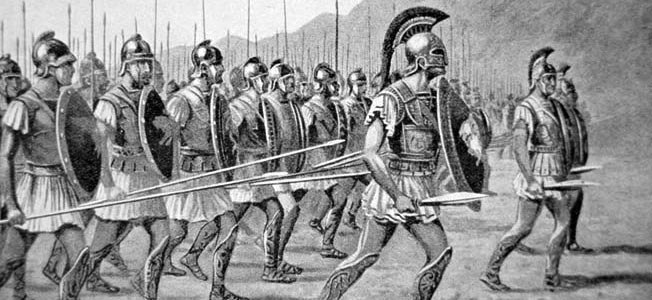
Ahead of this right wing was the other half of the Agrianians under Attalus, Macedonian archers commanded by Briso, and javelineers under Balacrus. Their task was to screen the advancing wing from Persian skirmishers and chariots. The heavy infantry phalanx was arrayed in battalions, taxeis, in order from right to left, under Coenus, Perdiccas, Meleager, Polyperchon, Amyntas, and Craterus. The four rightward taxeis were under the overall command of Alexander on the right, and the two left taxeis were commanded by Parmenio.
To the left of these now-veteran phalangists was the left cavalry wing under Parmenio. Immediately next to Craterus’s taxeis were the allied Greek horsemen under Erygius. Next to them were the Thessalians under Philip, son of Menelaus. They were superb cavalrymen from the plains of northern Greece and rivals in quality to the Companions. Ahead of the Thessalians were the Cretan archers and Achaean mercenary infantry, acting as a screening force in much the same way as the Agrianians and others were doing on the right. The best of the Thessalian cavalry, the Pharsalians, formed Parmenio’s bodyguard.
The final component of Alexander’s army at Gaugamela was the Thracian infantry camp guard. It was a small force, and the camp was probably the same as the one that Alexander had established four days previously, perhaps eight miles to the rear.
But now to begin the battle, Alexander led his men toward the waiting Persians. Edging ever more to the right brought that wing opposite the Persian left. The Macedonian battle order had the appearance of a flat-topped diamond, with the main line at the top, the flank guards drawn back at angles, and the rear phalanx at the base. This clever formation approached the Persian left with its own right side under Alexander leading, its left farther behind with Parmenio, now drawing near to the Persian center.
Physical and Psychological Domination
What went through Darius’s mind when he saw the Macedonian phalanx arrayed for battle is unrecorded, but the sight of a massive body of soldiers wielding long sarissas must have been unsettling. The power of the Macedonian phalanx was as much psychological as physical. A general who faced the Macedonian phalanx years later was the Roman Lucius Aemilius Paulus, who saw it trundle forward at Pydna in 168 bc. The sight of the phalanx, with its bristling spears and its serried ranks, inspired fear and alarm in him. He had never before seen anything like it. Similar thoughts must have crossed Darius’s mind that morning. The formidable appearance of the phalanx was an asset in battle. By the time it reached the enemy troops, they may already have been demoralized and half-beaten.
The greatness of the phalanx was not limited to its aspect. It was a tactical combat formation with extraordinary hitting power and resilience. A Macedonian phalanx battalion, the taxeis, was organized in 16 ranks. Each phalangist wielded a sarissa that could be more than 20 feet long. The first five ranks held their spears leveled, with their spearheads projecting beyond the first rank of phalangists. When drawn up in close order the phalanx presented a dense hedge of pikes, enabling the Macedonians to keep their enemies at bay.
A phalanx won through a combination of discipline and sheer mass. Although the phalanx was a naturally unwieldy formation, the Macedonians were able to adjust their ranks in response to circumstances through careful and repeated drill. The Macedonian phalanx had taken the best of the old hoplite tradition of the Greek city-states—disciplined heavy infantry—and placed it alongside other troop types that could help it win decisive victories over the Persians. Alexander’s was a combined arms army—the first in the Western world—and up to this day had proved unbeatable.
Darius attempted to halt Alexander’s maneuver and sent out a unit of Scythian cavalry, but it was ineffectual, and Alexander continued his movement to the right. Darius saw that Alexander had almost crossed the area of leveled ground on which he was preparing to unleash his scythed chariots. He had a subordinate commander, Bessus, take the Scythian and Bactrian horse on the left wing and circle around Alexander’s right. Alexander responded by sending the mercenary cavalry to charge them, but they were outnumbered and driven back. Next Alexander had his Paeonian cavalry and another group of mercenary horse strike the Scythians. The Scythians began to falter, but Bessus countered with the Bactrians, and they in turn attacked the Greek horsemen, the cavalry battle tending in favor of the Persians. Arrian writes that the Scythians were at an advantage because of the greater completeness of their armor, for both themselves and their mounts. But, the Macedonians staged a stubborn defense against the Scythians and Bactrians, and finally broke their formations.
Darius’s Chariots vs. Alexander’s Phalanx
Darius used this period to hurl his scythed chariots at the right of the Macedonian phalanx. Any hopes he may have had for these contraptions were soon dashed when they were quickly overwhelmed by javelins thrown by the Agrianians and Balacrus’s javelineers. Some of the charioteers were dragged from their vehicles to an unpleasant fate. Others who got through the skirmish screen simply passed through the phalanx, which parted in places when they neared, and the horse grooms in the rear dealt with them.
Darius then decided it was time to order the twin enveloping attacks against the Macedonian line. It seems that there was some confusion in the move, for instead of the greater part of the Persian left wing cavalry attacking the Companion cavalry, with the remainder to reinforce Bessus’s already engaged Scythians and Bactrians, the whole mass of them set out to join Bessus. British military historian J.F.C. Fuller writes that this could have been caused by simple confusion, or perhaps even by the natural inclination of the Persian cavalry to avoid the missiles of the javelineers and archers in front of the Companions. They veered to the left and ended up following the lead of the other horsemen all the way to Bessus.
This presented Alexander with the moment he had been waiting for. He immediately spotted the gap in the Persian line caused by the mass movement of the left wing Persian horse. He gathered his Companions, the Hypaspists, and his four taxeis of phalangists and charged straight for Darius in the center. Shouting a battle cry, Alexander and his men fell upon the Persians and engaged them in a ferocious melee. Alexander and his Companion cavalry were unstoppable, and when the phalanx taxeis arrived, with their pikes jabbing at the enemy, Darius turned in terror and took flight.
“Seize What Belongs to the Enemy”
On the Macedonian left the Persians, under Mazaeus, had ridden around Parmenio’s wing entirely and set off to raid the Macedonian camp in the distance. Whether or not this raid was intended to rescue the Persian royal women, as Curtius writes, is unclear. But attacking an enemy camp generally made tactical sense because it might cause him to draw troops from his main line to protect his camp. Parmenio sent word of the attack on the camp to Alexander and requested orders. Alexander replied to the messenger: “Go report to Parmenio that, if we win the battle, we shall not only recover our own property, but shall seize what belongs to the enemy.”
Interestingly, if Mazaeus’s task was to rescue the royal family, he failed, because the Persian Queen Mother Sisygambis refused to be rescued. The Persians looted what they could and left. There has been some speculation that Sisygambis was playing her cards closely, and was awaiting the outcome of the battle to see whether she should risk her not-disagreeable position with Alexander by fleeing with her son’s troops. Another answer may be that this old and noble lady simply refused to allow herself to be carried off by soldiers of any army.
The Macedonian army was now divided into two basic parts: the right under Alexander, having just driven Darius from the field; and the left under Parmenio, under pressure still from Mazaeus. A gap had opened between the two phalanx taxeis under Craterus on the left and the four that Alexander had taken with him to attack the Persian center. Into and through this gap charged the Indian and Persian cavalry and they struck the front-line Macedonian baggage train. Many of the Macedonians around the baggage train were surprised, not expecting the phalanx to be pierced, especially since there were two in place.
This does not necessarily mean that the second rear phalanx was broken. There was probably enough distance between the two lines to allow the Persians to stream around the rear phalanx just as the Persian left wing cavalry had circled around the Macedonian right earlier in the battle. Moreover, it seems that the rear phalanx commanders, once they learned of the attack on the baggage, turned about and struck the Persians in the rear. Most likely the rear phalanx had remained unengaged throughout the battle and amid the dust and swirling confusion of the battle had not noticed the movement of the enemy cavalry to their rear.
Parmenio was in a difficult situation and word was sent to Alexander to come to his aid. Arrian writes that Alexander was pursuing Darius when he received word of Parmenio’s plight, and fearing that a loss on the left might cost him a heretofore brilliant victory, he wisely ceased his chase and turned to help the Macedonian left wing. Fuller questions whether Alexander would have so rashly pursued Darius and favors instead the view that Alexander was committed on the far right to support the flank guards there. This makes sense, inasmuch as if Alexander were truly hunting Darius, no messenger in the world could have caught up with him in the chaos of battle.
Hunting the King of Kings
Whatever the case, Alexander moved to attack the Persian right wing. Gaugamela had developed into practically two separate battles, and fortunately for the Macedonians one was a great success while the other was not irretrievable. On the way across the plain Alexander and the Companions ran into large bodies of Persian cavalry leaving the field. Most likely these were Indians and Persians who had attacked the Macedonian baggage. They were taken by surprise, and a brutal cavalry battle ensued, in which some 60 Companions fell. But the quality of the Macedonian horsemen told, and the Persians took flight.
Alexander did not order a pursuit of them, but led his troops against Mazaeus’s right wing. By this time, though, Persian morale was sagging, and many were running from the field under pressure from the hard-fighting Thessalians by the time Alexander arrived. Accordingly, Alexander pursued them and Darius as long as the sun shone, with Parmenio also advancing. Alexander found and crossed the bridge over the Lycus River some dozen miles from the battlefield, where he rested his men while Parmenio seized the Persian camp. Alexander set off at midnight hoping to catch Darius, but the Persian monarch’s headstart was too great, and he eluded Alexander once again.
In fact, Darius would escape Alexander’s grasp for 10 more months, only to fall into his hands after a shameful betrayal by Bessus. But for the present, Alexander had won a smashing victory. Gaugamela was decisive. With the defeat of Darius the whole of the Persian Empire lay open to Alexander. The rich cities of the interior yielded to him, and the young king was now master of all that once belonged to Darius. Never again would the Persian king challenge Alexander in the field.
Darius had in many respects lost Gaugamela before the battle had begun. By counting on Alexander to come south to him at Babylon, the Persian king ceded to Alexander the operational initiative. Alexander seized it by instead heading east into northern Mesopotamia, forcing Darius to chase him. Darius further compounded his error when he ceded the tactical initiative to Alexander at Gaugamela itself by waiting for him at the battlefield. This allowed Alexander the luxury of choosing when to do battle. If Darius had placed his hopes for victory on the scythed chariots for which he had so laboriously flattened the terrain at Gaugamela, then he must have been dreadfully disappointed.
Even more egregious was his error in allowing Alexander to make the first move that day. With the field prepared, Darius should have unleashed his cavalry long before Alexander could get so close to him. Darius should never have fought so defensive a battle. With such a huge advantage in cavalry Darius would have been better off seeking battle with Alexander while the Macedonians were still on the march. Then, with an advantage in horse, the Persians could have harassed and disordered the phalanx and defeated it piecemeal, as was almost the case on the left wing at Gaugamela. One gets the sense that Darius, after the defeat at the Issus, the capture of his family, and the death of his wife, was himself a beaten man.
The Cost of Victory and Defeat
Not all of the blame can be laid upon Darius, though. The vast multitude of men under his command must have made control difficult, if not impossible. The mistaken movement of the Persian cavalry on the left to join Bessus is a blunder that can be attributed to the chaotic, follow-the-leader nature of cavalry warfare. It was this move that left the Persian center exposed to Alexander. The Persians also failed to take advantage of the opportunity that presented itself when the gap yawned between Alexander’s and Parmenio’s wings. The Persian and Indian cavalry chose to maul the baggage handlers instead of circling around to strike either Macedonian wing in the rear. A powerful attack on either might have turned the tide in favor of Darius, or at least gained an inconclusive draw that might have forced Alexander into negotiations. This, however, is all speculation, and the verdict of the battle of Gaugamela was in Alexander’s favor.
At what cost did Alexander win this unparalleled triumph? Figures from ancient historians conflict, as they always do, but they at least indicate the scale of the battle and how those present may have perceived it. The most conservative, and thus most likely, estimate of Persian losses comes from Curtius, who says that 40,000 Persians lost their lives at Gaugamela (Arrian writes that 300,000 Persians fell with another 300,000 taken prisoner, but it is highly unlikely that there were that many men in the entire Persian force.) Macedonian casualties, if one believes the sources, were much lighter. Arrian says that a hundred men died along with a thousand horses. Curtius records that less than 300 perished and Diodorus claims 500.
From the official reports, therefore, we may presume Macedonian losses were light. But one gets the sense in reading histories of Alexander that Macedonian losses were always under-reported. It is improbable, to say the least, that the Macedonians escaped this long and ferocious battle with fewer than a thousand killed. The deaths among the Macedonian baggage handlers and Thracian camp guards could not have been insubstantial, and this does not begin to tally the deaths in the main battle line.
Even if we accept the historians’ figures, and assume that the bulk of an army’s casualties occur after it has turned and fled, then just what went on between Macedonian and Persian soldiers locked in desperate combat is open to question. It is a highly dubious proposition that front-line combat at Gaugamela could have been a mere scuffle for the Macedonians and yet so dreadfully bloody for the Persians. While the Macedonian phalanx had proved its superiority over any Persian force, phalangists and other Macedonian troops must have fallen from Persian missiles and spears in excess of the reported figures. The existence of a Macedonian public relations campaign, intent on making their king and army appear invincible by purposefully underreporting the Macedonian dead and wounded, should not be discounted. There were, after all, many in Greece who would have been delighted by news of heavy Macedonian casualties.
Gaugamela’s Unpredictable Implications
The outcome of Gaugamela had wide implications. Alexander’s victory opened up Asia for colonization by Greek soldiers, artists, and merchants. The ideas of the Greeks would be carried into India and Central Asia, and a new civilization would emerge from the crucible of Alexander’s conquests. History would know it as the Hellenistic Age, and among its glories would be the sparkling city of Alexandria and the great cultural refinement of Greek civilization in the centuries to follow.
But Alexander had also brought the sword to Asia, and his march through that continent was bloody. American classicist Victor Davis Hanson asserts that Alexander was a brutal killer, and that perhaps a million died as a result of his invasion of the Persian Empire.
History has often marveled at Alexander for his brilliant successes, but it should also remember that his victory at Gaugamela opened up for him yet more lands and peoples to subdue, and the approach of Alexander, despite the chivalrous propaganda that surrounded him, engendered terror and loathing in those who had the misfortune to be in his path. Following Gaugamela, Alexander would exhibit increasing signs of megalomania, and in his drunken binges would one day murder Cleitus the Black, the very man who had delivered him from a Persian sword cut at the Granicus years before. He would later murder Parmenio and his sons on false charges and execute any who stood in the way of his overarching will.
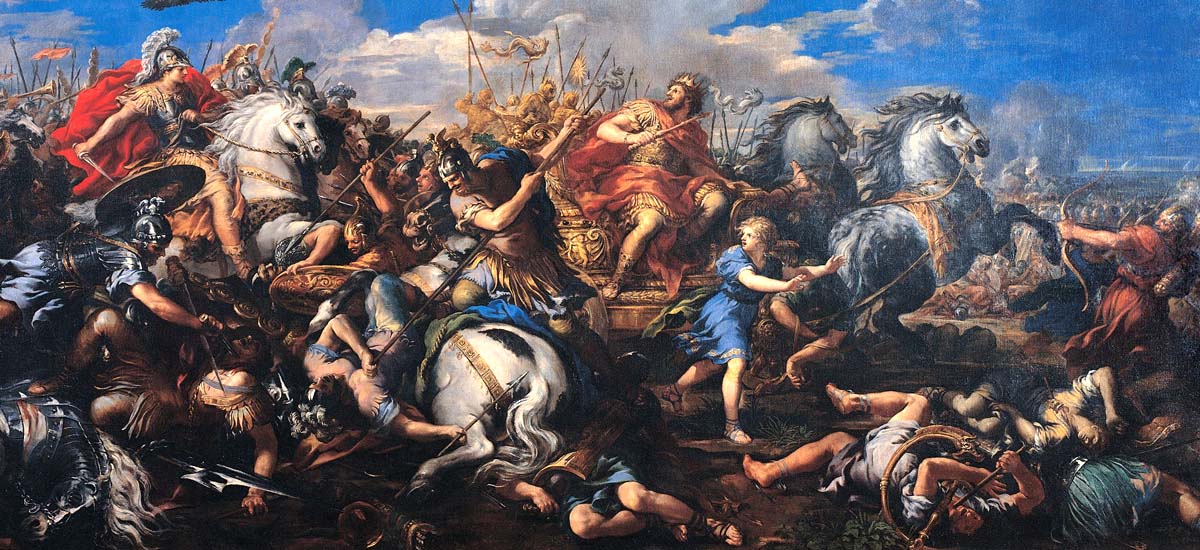
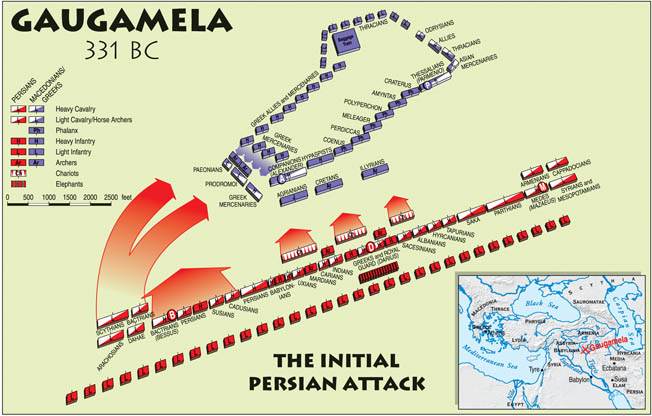


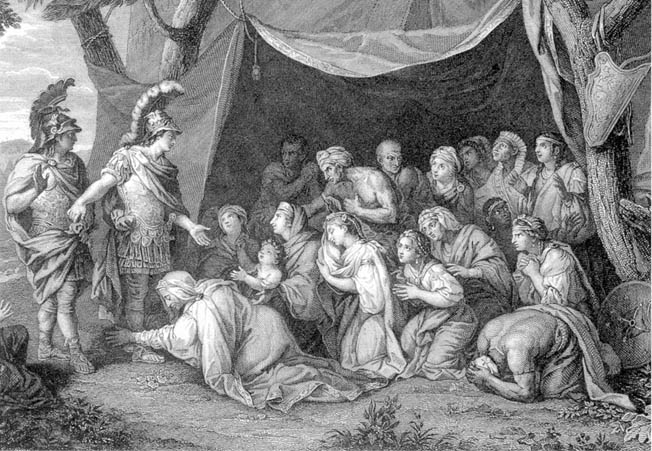
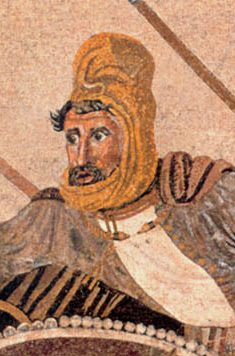
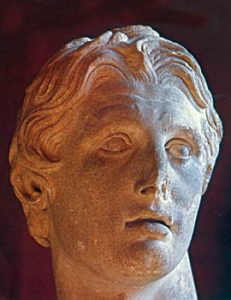
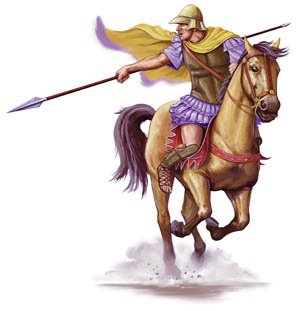
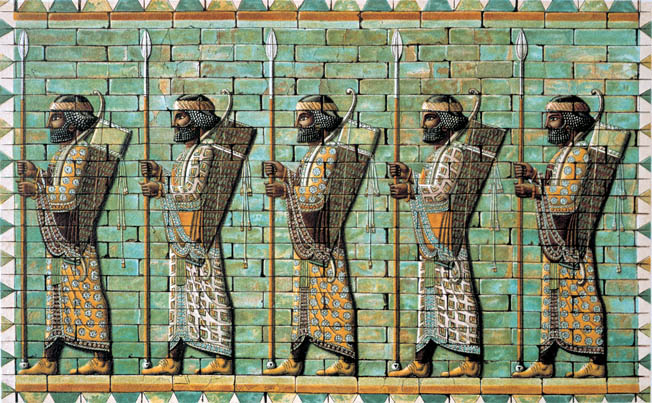

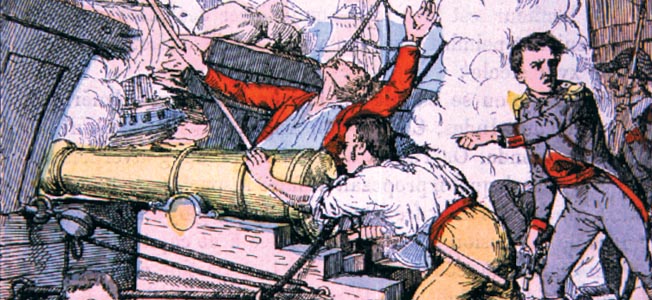
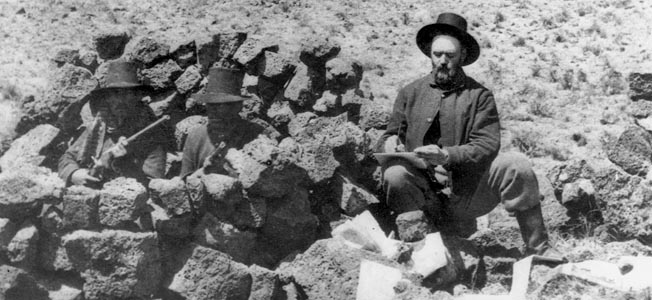
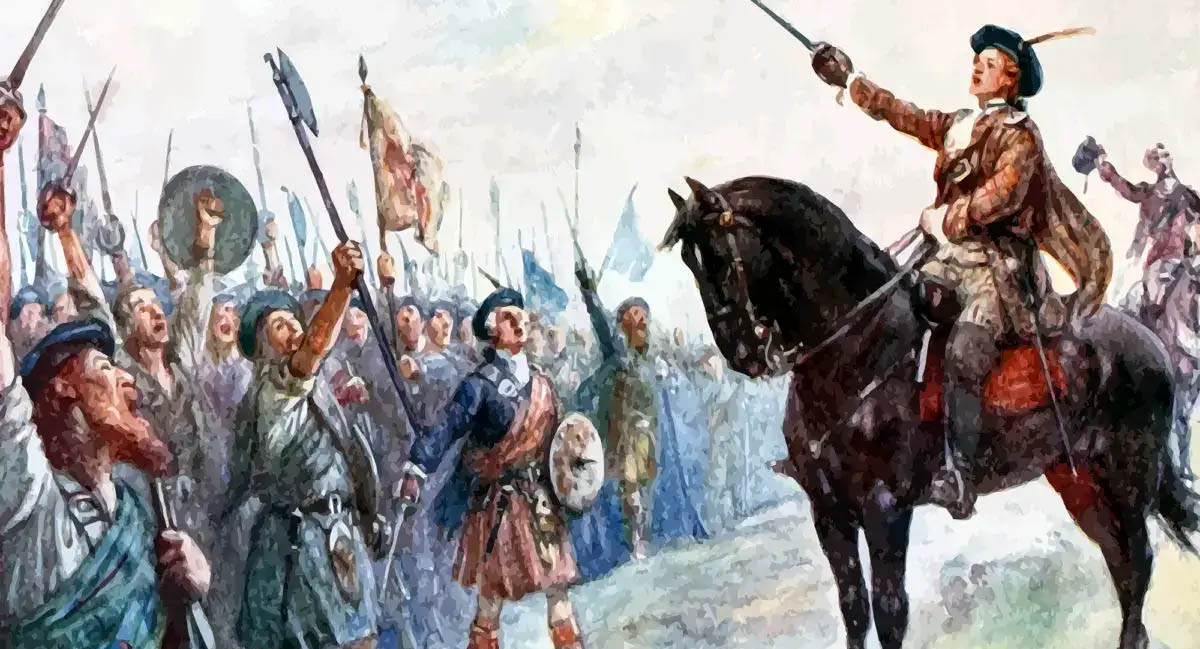
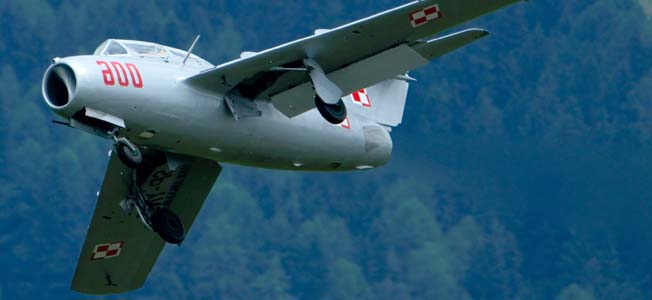
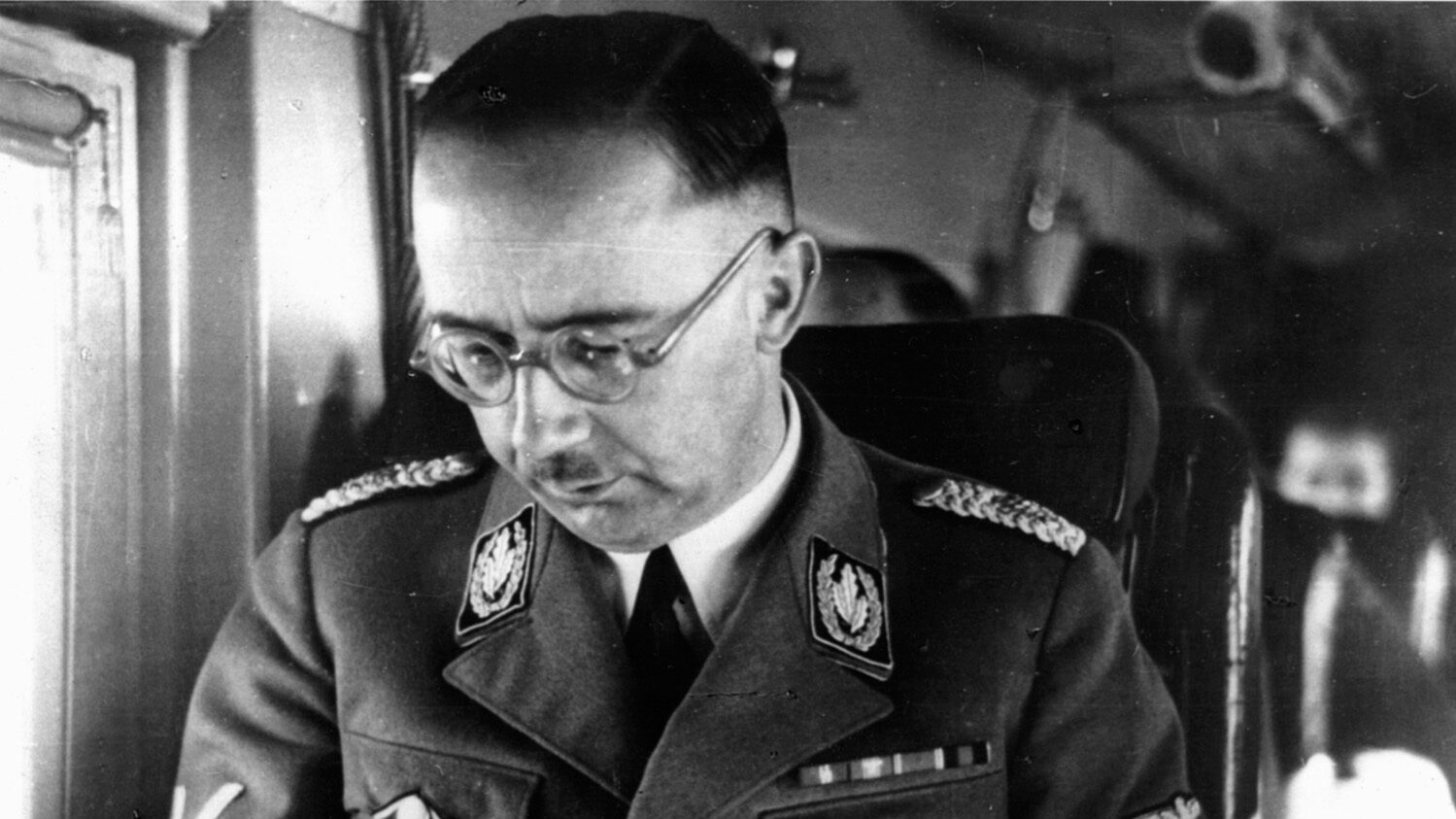
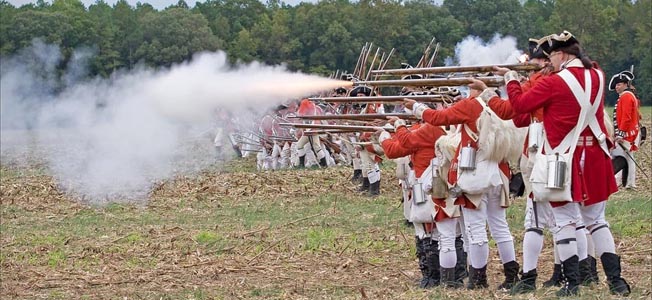
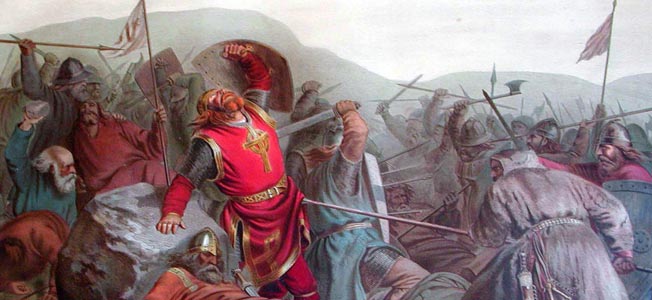
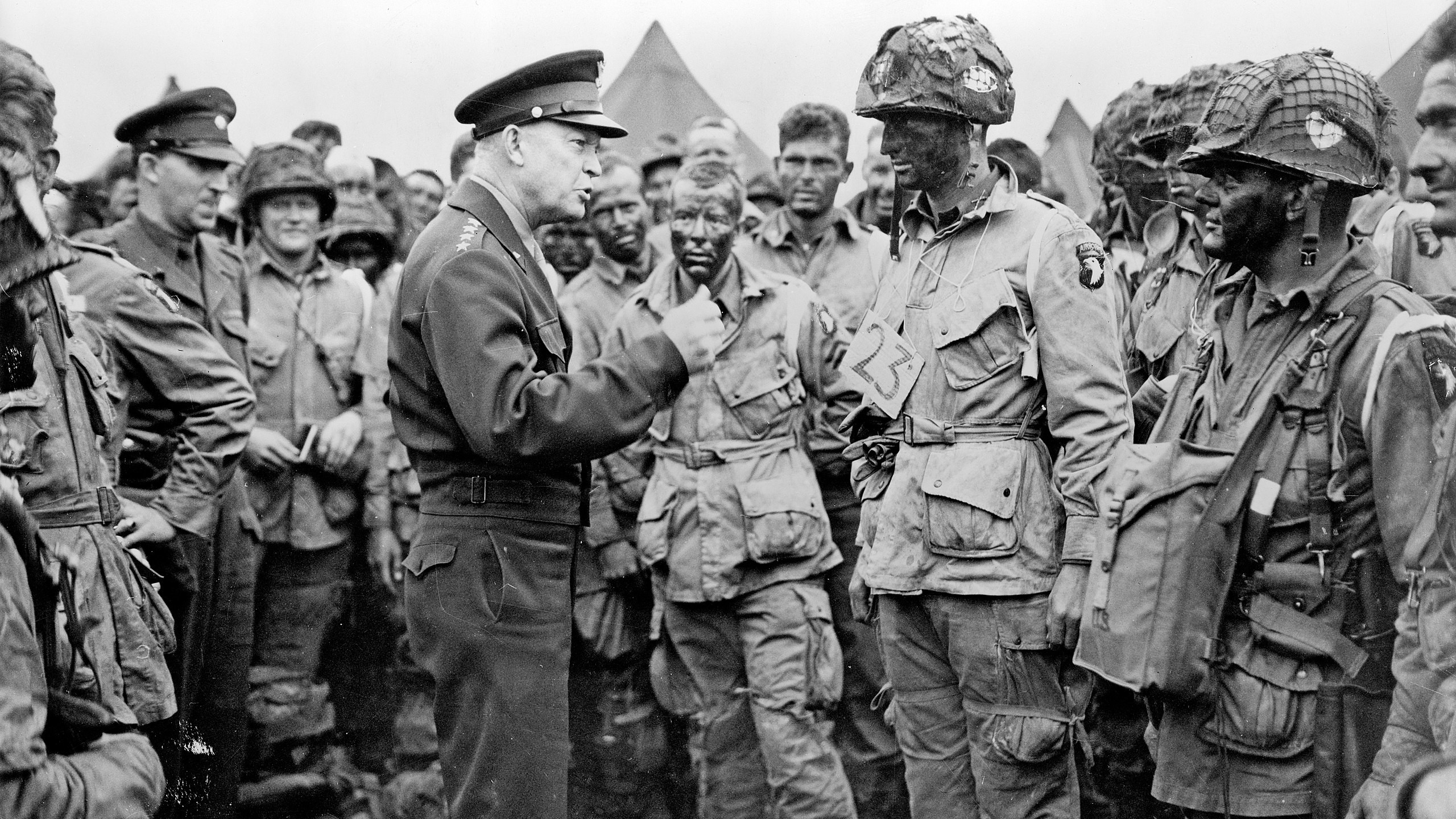
Join The Conversation
Comments
View All Comments